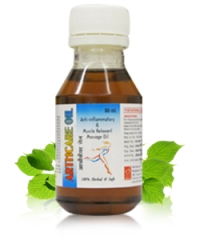Spinal arthritis, also called spine osteoarthritis, occurs when there is deterioration of the bones in the spine, particularly the discs between the vertebrae. This deterioration occurs gradually over time. When the bones rub together, the spine becomes inflamed and causes pain. This condition often develops with age, most commonly after the age of 30. Obesity can also cause spinal arthritis, because carrying extra weight puts too much pressure on the discs and causes them to wear. Genetics is another factor, as it is known to run in families. Gout, diabetes, and rheumatoid arthritis can also lead to spinal arthritis.
The symptoms of spinal arthritis are pain and stiffness in the back, and loss of mobility. Depending on the location of the disc deterioration, a person can feel pain anywhere from the neck, radiating down the shoulder and arms, pain and loss of mobility in the middle of the back, or, in cases of lower back pain, can even radiate down the flank and legs. Morning stiffness is very common, and the pain can be exacerbated by prolonged sitting, repetitive movements, or any sustained movement.
Spinal arthritis is sometimes overlooked. You may mistake it for a pulled muscle, muscle spams or everyday back pain. If you experience the pain for more than a few days you should seek medical attention. The doctor may be able to diagnose it through a simple exam or you may have to have a test performed. Blood tests, x-rays, MRI’s and CAT scans are all commonly done to determine if it is indeed spinal arthritis. If the cause of the back pain cannot be diagnosed through these tests the doctor may perform a bone scan or myelogram. The myelogram injects a liquid dye into the spine. The dye will then help detect if any spinal pressure is present.
Recommended Products
The most common treatment for spinal arthritis is a combination of anti inflammatory medication and pain relievers such as NSAIDS. Weight loss can help alleviate the pain. Physical therapy and massage are also effective. Hydrotherapy and hot and cold therapy can help manage pain. In extreme cases, surgery can be performed. Lumbar laminectomy, discectomy , and spinal fusion are the surgical options for the person suffereng extreme pain.
Caution: Please use Home Remedies after Proper Research and Guidance. You accept that you are following any advice at your own risk and will properly research or consult healthcare professional.






